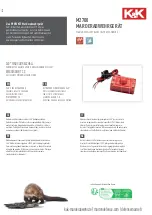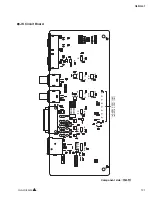
-
10-
CALIBRATION
Method 1: Shunt calibration with Transducer Techniques sensors.
1)
With the LCA-9PC module, insert the mating DB9 connectors, as shown under
Electrical Connections.
2)
With the LCA-RTC module, insert the mating screw clamp plug connectors, as
shown under Electrical Connections.
3)
For adjustment of output voltage, measure voltage with a calibrated 4-1/2 digit
(19,999 count) DC digital voltmeter across Pin 3 of J2 (voltage output) and Pin 2 of
J2 (electrical ground).
4)
For calibration of current output, measure current from Pin 1 of J2 (current output)
to Pin 2 of J2 (electrical ground). Use a calibrated 4-1/2 digit (19,999 count) DC
digital voltmeter to measure the voltage across a precision load resistor, and divide
this voltage by the precision resistance value to obtain current. The precision
resistor can be a 500
Ω precision resistor or a 100
Ω precision resistor in series with
a non-precision 400
Ω resistor.
5)
Apply power by connecting 11.8 to 26V DC across Pin 4 of J2 (power input) and
Pin 5 of J2 (electrical ground).
6)
Allow 30 minutes for warmup to achieve maximum stability and accuracy.
7)
With zero load applied to the transducer, adjust the zero potentiometer to obtain a
zero reading on the voltmeter.
8)
Refer to the sample calibration certificate Figure 4 (typical of the certificates
supplied with TTI transducers). Multiply the percent of load value (PCT LOAD)
simulated by an 87.325 k
Ω resistor, such as 50.34% in the sample, by the desired
full-scale voltage output, such as
±
10V DC. Example: 10V x 50.34% = 5.034V.
9)
Press and hold the shunt calibration button (calibration button to remain depressed
throughout this step). Adjust the span potentiometer until the voltmeter displays the
value calculated in step 8, for example 5.034V. Release the shunt calibration button
when adjustment is complete.
10)
Repeat steps 7 through 9 if necessary.
Method 2: Using a known load (dead weight calibration).
1)
Follow Method 1, steps 1 thru 7.
2)
Apply a known load (dead weight) to the transducer.
3)
Adjust the span potentiometer to so that the multimeter displays the known load
(dead weight) correctly in engineering units.
4)
Remove the known load (dead weight).
5)
Readjust the zero potentiometer if necessary so that the multimeter displays zero.
6)
Repeat steps 2 through 5 until the zero and dead weight readings are correct.




































